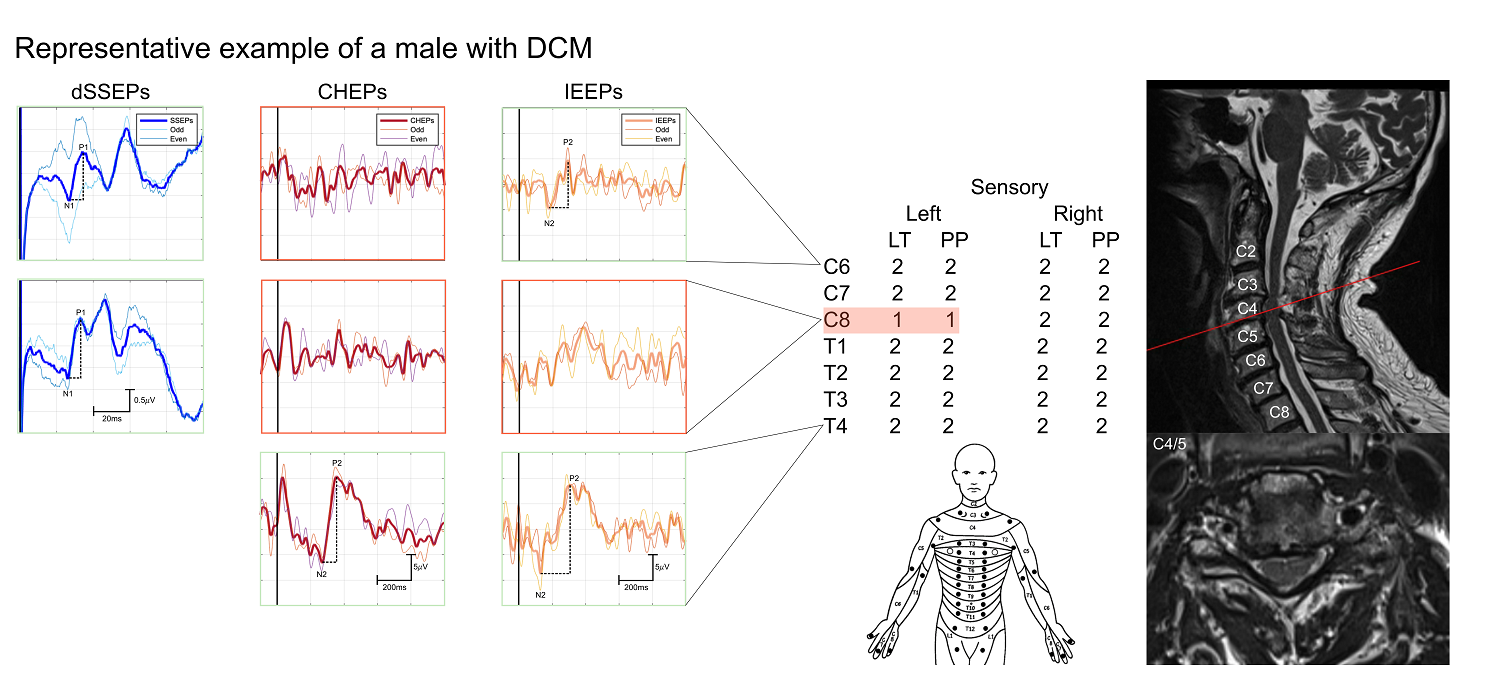Research in Paraplegiology
Pain Evoked Potentials in Spinal Cord Disorders
In slowly developing spinal cord pathology such as degenerative cervical myelopathy (DCM), spinal tumor, or syringomyelia, clinical symptoms may be minor and widely varied with the result that insidious onset and progress of the disease may be missed. This means that timely diagnosis and necessary treatment will likely be delayed.
While standard neurophysiological testing with somatosensory evoked potentials (SSEP) will not detect incipient spinal pathologies of this kind, pain-related evoked potentials (PREPs) provide a sensitive tool for objective early diagnosis due to the high prevalence of conduction defi cits of centro-medullary crossing spinothalamic fibers. Notably, nociceptive stimulation for testing of the spinothalamic tract with contact heat evoked potentials (CHEPs) has shown the best sensitivity in detecting occult spinal conduction failure of this kind. Because the methodology is highly selective in recruiting peripheral temperature and pain fibers, it is sensitive in detecting spinothalamic conduction failure. However, it is technically challenging and requires equipment that is not available in standard neurophysiological laboratories. Nociceptive testing is also possible with intra-epidermal electrical stimulation (IES), which provides high local current density through concentric surface electrodes at safe electrical stimulation intensities. This could easily be made available to most standard neurophysiological laboratories.
This study aimed to detect potential impairment of spinal sensory propagation in DCM by comparing PREPs in response to IES (IEEPs) and following contact heat stimulation (CHEPs) with SSEPs, with the latter testing spinal dorsal columns. In 27 patients with DCM and 27 agematched healthy controls (HC), IEEPs showed similar discriminative power in detecting spinal pathology, suggesting spinothalamic tract propagation of IES and high sensitivity of IEEPs comparable with CHEPs.
Schmerz-evozierte Potenziale
Bei bestimmten Rückenmarkserkrankungen werden Symptome wegen ihres schleichenden Beginns oft spät erkannt, was zu verzögerter Diagnose und Behandlung führen kann. Klassische neurophysiologische Tests sind hier nicht responsiv. Die sensitivsten Tests sind Hitze-Schmerz-evozierte Potenziale, die jedoch technisch sehr aufwendig sind. In der vorliegenden Studie wurde die intraepidermale elektrische Stimulation (IES) als alternative Schmerzstimulation mit der Hitze-Schmerz-Stimulation verglichen. Die Schmerz-evozierten Potenziale zeigten eine gute klinische Anwendbarkeit und bei 27 Patientinnen und Patienten im Vergleich mit Gesunden eine hohe Detektionsrate bei Myelopathie. Aus den Ergebnissen kann abgeleitet werden, dass die IES zu einer Aktivierung der Schmerzbahn im Rückenmark führt und dass sie daher eine diagnostische Alternative zur Hitze-Schmerz-Stimulation darstellt.
At a Glance
Pain-related Evoked Potentials
Key Collaborators
Project lead: Dr. Sara Uldry, PhD
PD Dr. Michèle Hubli, PhD
PD Dr. Martin Schubert
Departments and Partners
Balgrist University Hospital: Spinal Cord Injury Center
Clinical Relevance
Neurophysiological tests for sensitive early detection of incipient spinal pathology

